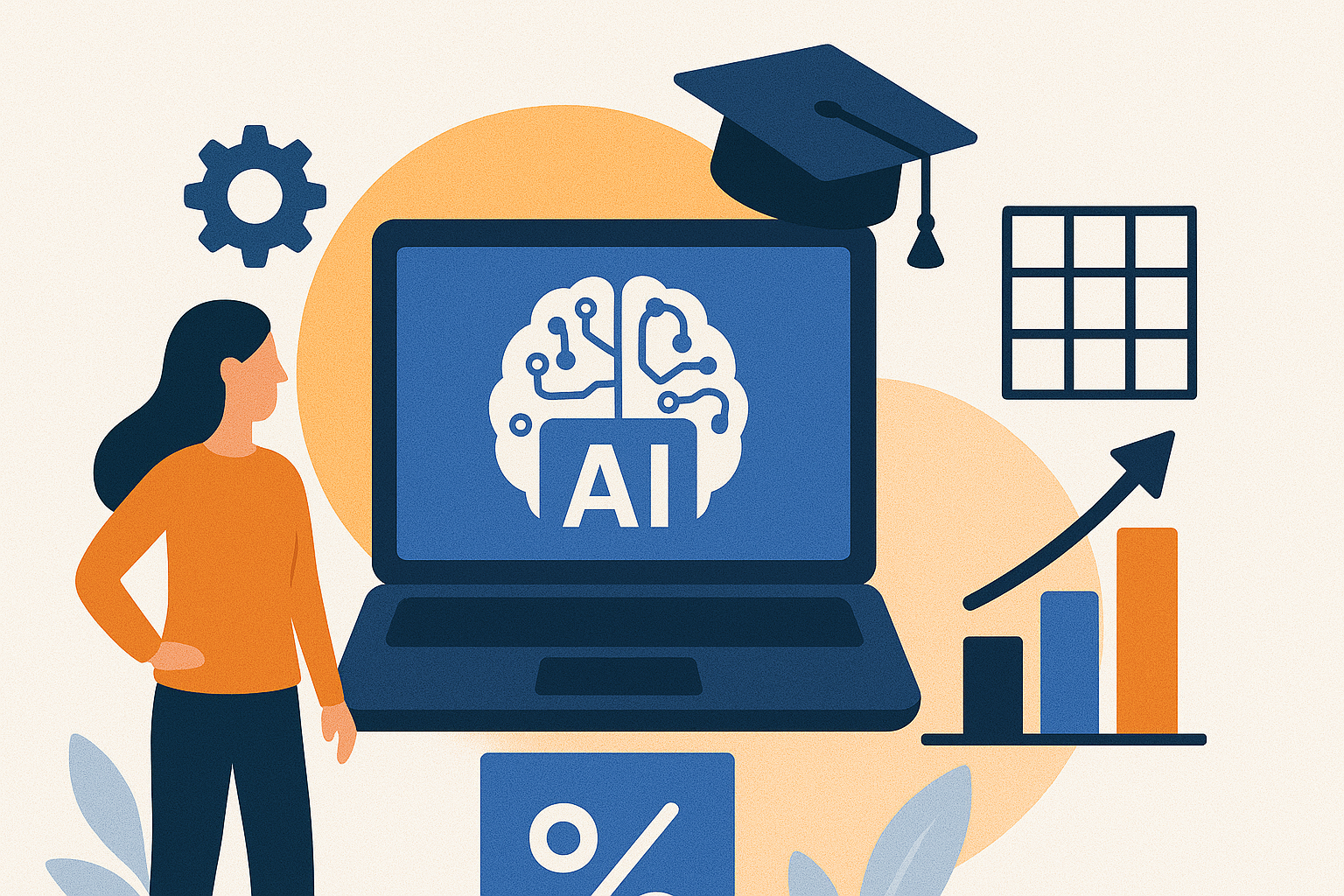About the Blog
In The Melt Season Playbook, a three-part micro-series from The Application, host Allison Turcio equips enrollment marketers with a high-impact toolkit for navigating summer melt using AI. Each episode, clocking in under 10 minutes, delivers tactical strategies to help teams spot melt risks earlier, communicate with empathy, and scale outreach without burnout. From leveraging ChatGPT to reframe checklist emails to utilizing behavioral signals in CRMs, this series is a must-listen for anyone responsible for retaining deposited students through move-in day.
If you're looking to transform your summer melt strategy with AI-enhanced personalization, data-driven intuition, and a more human tone, this series delivers.
Key Takeaways
- Use AI tools like ChatGPT to identify early melt-risk behaviors hidden in CRM data—think email open patterns, portal logins, and financial aid activity.
- Tap into real-time sentiment from students and families using AI-powered web research to align messaging with what they're worried about.
- Pressure-test student communications by prompting AI to evaluate tone, clarity, and urgency from the student’s POV.
- Refine outreach by segmenting messages for specific personas, such as first-generation, commuter, or pre-med students, without tripling your workload.
- Support parents during the transition by using AI to anticipate their questions and build empathetic communications.
- Turn internal insights into scalable actions—use counselor notes, student interviews, and institutional knowledge to enrich AI prompts.
- Let AI act as a communication coach, ensuring that checklist-style content becomes welcoming, anxiety-reducing invitations instead.
- Foster a culture of “working smarter”, using AI to reduce team burnout while increasing personalization and relevance.
How Can AI Help You Spot At-Risk Students Before They Melt?
In Episode 1, Turcio kicks things off with a bold reframe: melt season isn’t just a retention problem—it’s a mystery, and AI is your detective. By uploading last year’s anonymized enrollment data into ChatGPT, enrollment teams can uncover behavioral patterns that correlate with melt. Look for signs like dropped email engagement, housing indecision, or ghosted financial aid follow-ups. These aren’t just red flags—they’re action items.
Instead of asking teams to make gut-based calls, AI helps them surface meaningful insights faster. By creating CRM filters and targeted call lists based on this analysis, institutions can intervene early, without relying solely on hunches. Importantly, Turcio underscores that AI is not the decision-maker, but rather a powerful advisor that can sharpen human intuition with data-backed context.
This approach transforms your CRM from a historical archive into a proactive melt radar. Think of it as turning behavioral breadcrumbs into a strategic GPS for summer engagement.
What Are Students and Parents Really Thinking During Melt Season?
Beyond institutional data, Turcio emphasizes the power of public data, especially what students and their families are sharing online. Using AI’s live research tools, you can ask: “What concerns are first-gen parents posting about this July?” The responses offer a sentiment snapshot that can guide not just what you say, but how and when you say it.
This isn't about mining the internet for stats—it’s about deepening empathy. The insights AI pulls can serve as both a content starter and a tone check. Are parents asking about orientation fees you haven’t explained clearly? Are students panicking about roommate assignments? These clues help enrollment teams tailor communications to real-time fears, not generic timelines.
In short, AI helps you reverse-engineer trust. When students and families feel heard and understood, your emails become less like reminders and more like lifelines.
How Can AI Pressure-Test Your Melt Plan?
Episode 1 also introduces a powerful prompt: “Pretend you’re a student who just deposited at [Your School]—what do you expect in the next 30 days?” This kind of role reversal forces marketers to view their processes from a student’s perspective, helping surface communication blind spots and expectation gaps.
Too often, institutions default to internal logic—what they think students want to know. But melt prevention depends on meeting students where they are. Whether it’s unclear timelines or emotionally flat emails, even small oversights can spiral into disengagement. Turcio encourages marketers to use AI to vet everything from cadence to tone before hitting send.
This isn’t just a messaging audit—it’s a mindset shift. One that centers the student voice in every communication, and uses AI as the lens to hear it louder.
Can You Map the Emotional Journey from Deposit to Move-In?
Using AI to build a “melt map” is one of the most compelling ideas in the series. In Episode 1, Turcio offers this prompt: “Map the emotional and practical journey of a student between deposit and move-in.” The goal? Understand when students feel anxious, lost, or unsupported, and build communications that proactively respond.
Instead of following the calendar, this strategy follows emotion. July might be all about financial stress. August could bring excitement mixed with fear. With these insights, institutions can align their messages with the moments that matter. No more sending housing info when students are worried about FAFSA.
The key takeaway: Melt is emotional. And the most effective strategy is emotional intelligence, amplified by AI.
How Can AI Make Your Messages Feel More Human?
In Episode 2, Turcio shifts from analysis to application, showing how AI can help refine the tone of your outreach. Enrollment marketers often send checklist-style messages that sound sterile or robotic. Her advice? Use ChatGPT to rewrite those reminders with warmth and urgency. Prompts like “Make this sound like it’s from a friendly advisor” can turn cold emails into caring nudges.
Tone matters more than ever during the melt season. Students and families are overwhelmed. Your message can either increase that stress or relieve it. Turcio suggests pressure-testing your emails with prompts like: “Would this feel welcoming to a stressed-out student?” These micro-adjustments go a long way in building trust and reducing drop-off.
AI becomes more than a writing assistant—it’s your tone coach, helping you move from transactional communication to transformational engagement.
How Do You Create Personalized Content Without Burning Out?
Episode 3 is a masterclass in scaling empathy. Turcio shares how teams can use AI to turn counselor notes into individualized follow-ups in minutes. Instead of writing from scratch, drop notes into ChatGPT with prompts like, “Turn this into a message that references [student’s interest] and encourages orientation sign-up.”
You can also use AI to reframe messages for different student segments—like commuter first-gens, high-achieving science majors, or students returning from a gap year. This level of customization typically requires hours of manual effort. AI makes it accessible and repeatable.
The big idea here is sustainability. AI doesn’t replace your team—it protects your team, letting them do more of what matters (personal connection) and less of what drains them (repetitive writing).
Why You Should Rethink Your Checklist Emails
Turcio ends the series with a practical (and provocative) insight: checklists aren’t neutral—they’re emotional. Many institutions recycle the same housing or orientation emails year after year, assuming the format works. But what if it’s pushing students away?
She recommends dropping those messages into ChatGPT with prompts like, “Does this sound welcoming to an overwhelmed student?” AI can offer real-time tone shifts—like a warmer greeting, simplified language, or more affirming CTA. These tweaks transform requirements into reassurances.
Ultimately, AI isn’t here to automate your voice—it’s here to help you find it, polish it, and align it with what students need most: to feel seen, safe, and supported.
Want to turn AI into your melt season superpower? Listen to The Melt Season Playbook from The Application Podcast, hosted by Allison Turcio. These bite-sized episodes pack real strategy, real empathy, and real-time tools to help enrollment teams thrive, not just survive, this summer. Subscribe now and start building a smarter, more human melt plan.










